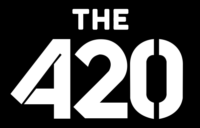Policy Watch
Crypto Market Evolution: MiCA Regulation Paves the Way for Legal Certainty and Harmony

The European Parliament and the Council of the European Union have recently supported the new Regulation (EU) 2019/1937, commonly known as the MiCA Regulation, which aims to establish a unified legal framework for the rapidly growing market of crypto assets within EU countries.
The regulation addresses crucial aspects such as consumer rights, market stability, safe investments, and protection against fraud and inadequate services.
While the MiCA Regulation is set to come into effect gradually, starting from June or July 2024, it is expected to have a significant impact on the industry.
One of the primary objectives of the MiCA Regulation is to provide legal certainty and harmonization in the crypto asset market. It aims to create a stable legal framework for all crypto assets that are currently not regulated by existing laws. By doing so, the regulation seeks to promote fair competition, foster innovation, and encourage the widespread use of distributed ledger technology (DLT) in the industry.
Consumer and investor protection is another crucial aspect emphasized by the MiCA Regulation. It aims to enhance consumer trust in the crypto asset market by holding service providers accountable for their actions. The regulation introduces higher standards of responsibility for providers of crypto asset services and is intended to facilitate the development of a secure and reliable market.
ALSO READ: Victim Of A Cyber Attack? Now Dial 1930 & 155260 To Register Complaint And Get Your Money Back
To ensure market integrity, financial stability, and the smooth operation of payment systems, the MiCA Regulation includes measures to prevent financial instability and illegal activities in the crypto asset market. It complements existing laws governing the prevention of money laundering and the funding of terrorism, specifically in cases where cryptocurrencies are involved.
Under the MiCA Regulation, crypto assets are categorized into three groups: asset-referenced tokens, e-money tokens, and other crypto assets. Asset-referenced tokens aim to maintain a stable value by referencing other values, such as official currencies. E-money tokens retain a stable value based on a single country’s currency. The remaining category includes crypto assets that do not fall under the previous two definitions.
The regulation introduces licensing requirements for service providers and issuers of asset-referenced tokens and other crypto assets. It also establishes the obligation to create White Papers for crypto assets, ensuring transparency and information provision for offers and access to trading. Additionally, the MiCA Regulation seeks to prevent risks associated with the misuse and abuse of the crypto asset market.
It’s important to note that the MiCA Regulation does not cover unique and non-fungible tokens (NFTs) and crypto assets already regulated by existing legal frameworks. Financial instruments subject to EU Directive No 2014/65/EU, funds, deposits, insurance and pension products, and securitization transactions fall outside the scope of the MiCA Regulation.
One significant development brought about by the MiCA Regulation is the mandatory introduction of crypto asset White Papers. These documents will provide detailed information about the issuer, project development stakeholders, rights and obligations related to the crypto assets, features of the public offer, technology standards, and associated risks. False information in White Papers will be subject to liability, with penalties reaching up to 700 thousand euros for individuals and at least 5 million euros for legal entities.
The MiCA Regulation is expected to address environmental concerns by requiring crypto asset market participants to disclose information about the environmental and climate impacts of their activities. The European Securities and Markets Authority (ESMA) will develop draft technical standards for the content and presentation of this information, while EU Member States will retain some discretion in sustainability matters.
With the approval of the MiCA Regulation, the EU is taking a significant step toward establishing a comprehensive legal framework for the crypto asset market. The regulation’s provisions are expected to ensure transparency, investor protection, and market stability, fostering the growth and development of the industry within the European Union.
Key Benefits of the MiCA Regulation
The MiCA Regulation is expected to bring a number of benefits to the crypto asset market, including:
Increased legal certainty: The MiCA Regulation will provide a clear and comprehensive legal framework for crypto assets in the EU. This is expected to make it easier for businesses to operate in the market and for investors to understand the risks involved.
Increased harmonization: The MiCA Regulation will create a single set of rules for crypto asset providers across the EU. This is expected to reduce the cost of compliance and make it easier for businesses to operate across borders.
Improved consumer protection: The MiCA Regulation will include a number of measures to protect consumers, such as requirements for clear and accurate information and for the prevention of market abuse.
Enhanced market integrity: The MiCA Regulation will include measures to prevent financial instability, such as requirements for the backing of asset-referenced tokens.
Follow The420.in on
Telegram | Facebook | Twitter | LinkedIn | Instagram | YouTube






